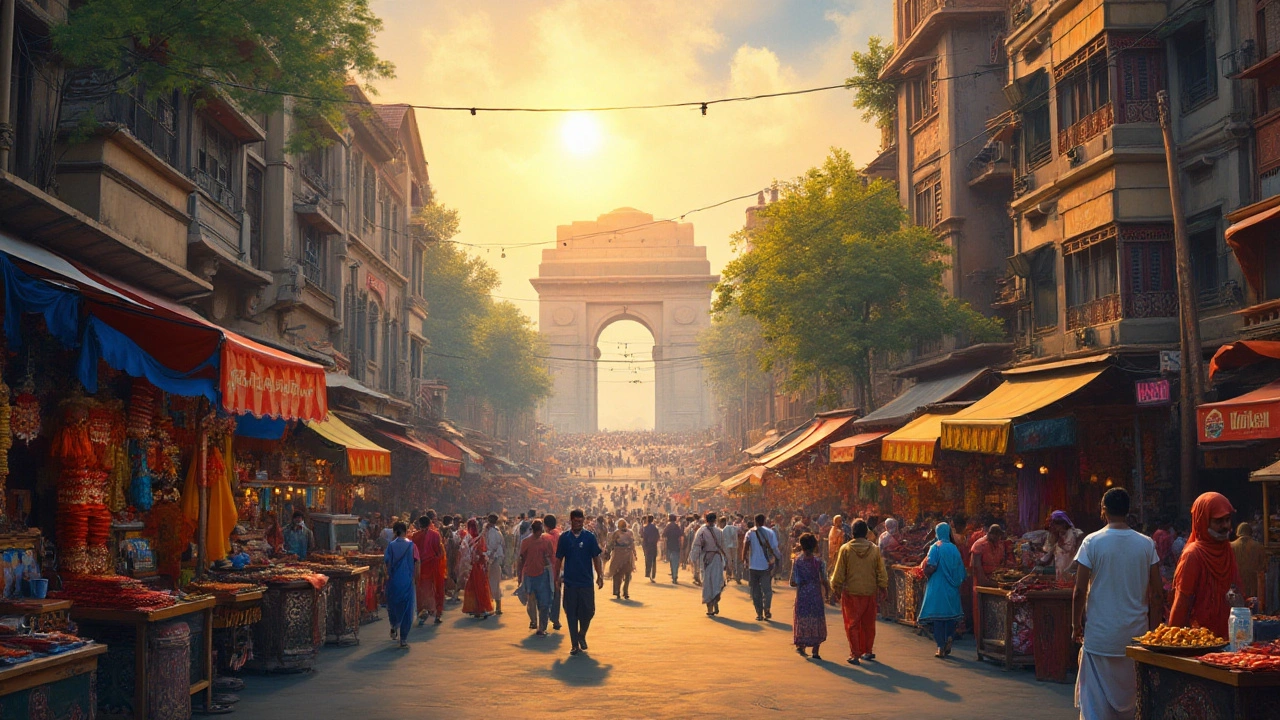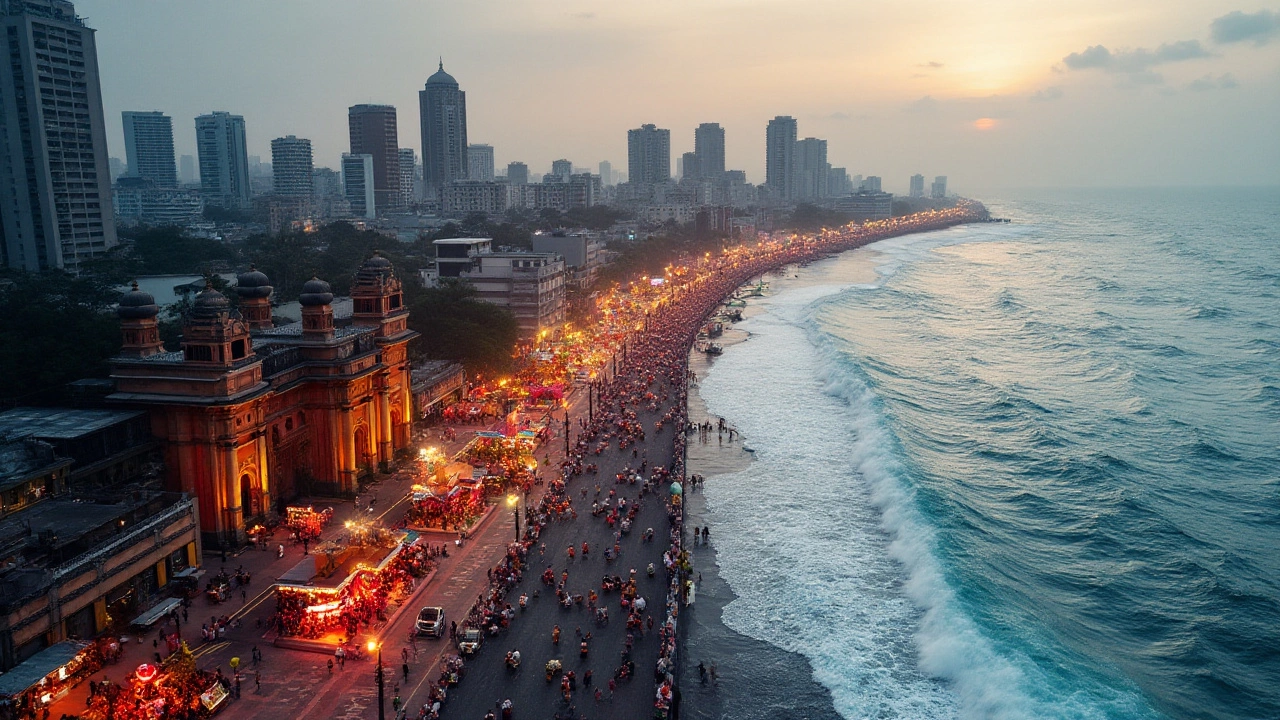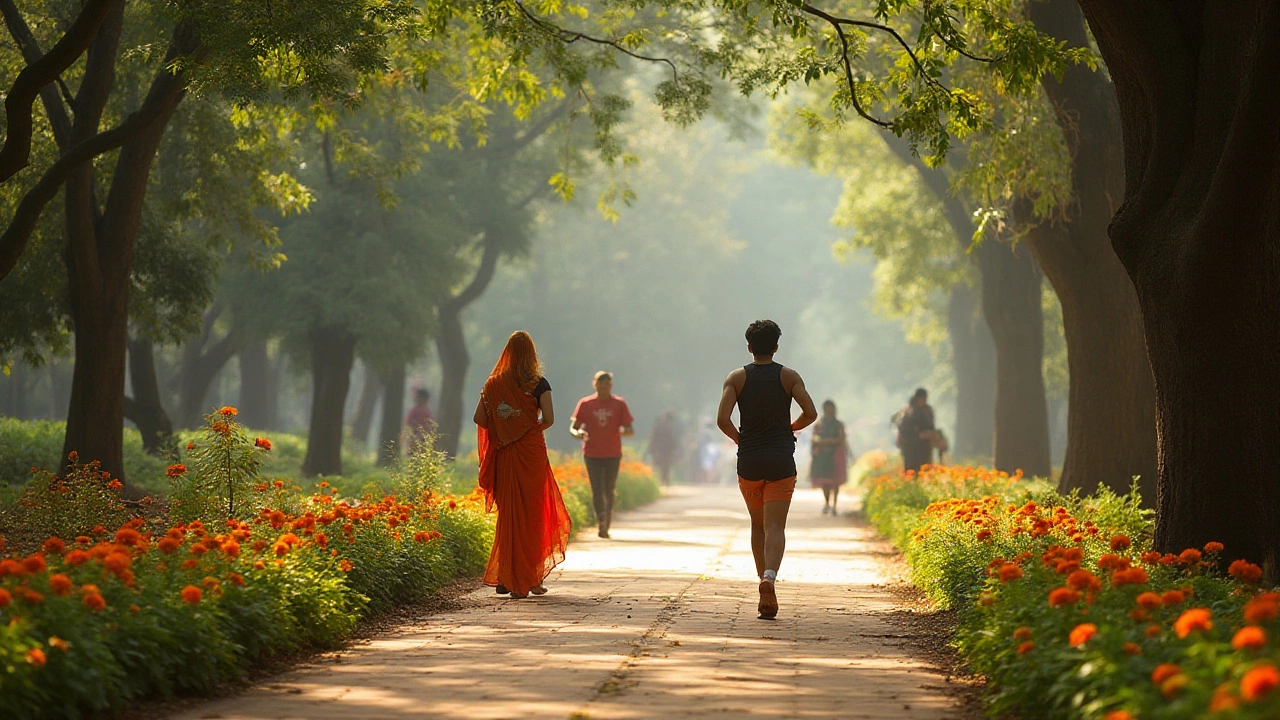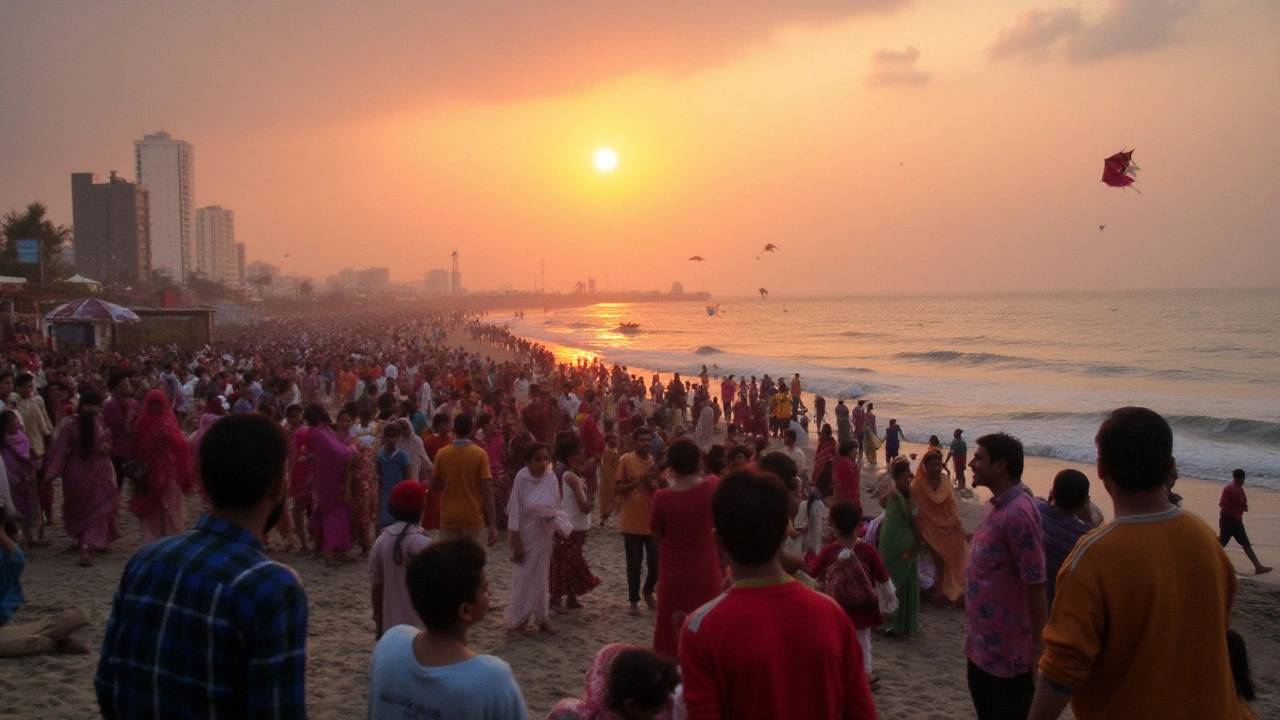Exploring New Delhi vs Mumbai: Which is the Best for Your North India Adventure?

India’s vast and diverse landscape offers myriad experiences for the avid traveler, with New Delhi and Mumbai being standout destinations. Each city reflects distinct parts of India's soul—one steeped in history, the other pulsating with modern energy.
New Delhi, the country’s bustling capital, resonates with echoes of its glorious past. From winding through the relics of empires at the Red Fort to standing beneath the towering Qutub Minar, visitors are swept into a journey through history.
Mumbai, on the other hand, is a city that never sleeps. As the financial powerhouse, it's where aspirations meet reality amid a skyline that hugs the Arabian Sea. Theatre, film, and global cuisine create a cultural mosaic that’s hard to resist.
Choosing between these urban giants can be daunting, but understanding what each has to offer helps create a travel itinerary tailored to your interests. From the grandeur of Mughal gardens to the throbbing beats of Bollywood, this guide will help you decide where to embark on your next adventure in North India.
Historical Attractions
When it comes to historical attractions, both New Delhi and Mumbai serve as open-air museums that narrate tales of India's rich past. New Delhi stands as a guardian of the country’s historic legacy, boasting countless monuments and sites from earlier times. The majestic Red Fort, with its sprawling complex, harkens back to the era of the Mughal Empire, a testament to the architectural brilliance of that period. Built by Shah Jahan in the 17th century, this UNESCO World Heritage Site captivates visitors with its red sandstone walls and intricate carvings. The nearby Jama Masjid, one of the largest mosques in India, offers stunning views and spiritual solace, holding a sanctuary for those seeking peace amid the city's hustle.
Not far from these Mughal masterpieces is the Qutub Minar, a soaring tower built by Qutb al-Din Aibak, the founder of the Delhi Sultanate, in 1193. Standing at 73 meters, the Qutub Minar is not only a UNESCO World Heritage site but also a symbol of the Islamic rule’s architectural zenith. Its intricate carvings and stunning geometry continue to amaze visitors. As you stroll through these ancient structures, you might hear the echo of historic moments, keeping the tales of dynasties alive. “History is not a burden on the memory but an illumination of the soul,” said Lord Acton, and nowhere is this truer than in the historical quarters of New Delhi.
Mumbai, though more modern in its current avatar, holds its own historical treasures. The Gateway of India, arguably the city's most iconic structure, serves as a literal gateway into this city of dreams. Built in 1924 to commemorate the visit of King George V and Queen Mary to India, it blends Hindu and Muslim architectural styles, offering a glimpse into the nation’s colonial past. Join the throngs of tourists and locals alike who flock to this haven for a breath of coastal air and a peek into colonial India’s epicenter.
The Chhatrapati Shivaji Maharaj Terminus, another UNESCO World Heritage site, is not just a railway station but a beautiful amalgam of Victorian-Gothic architecture. Originally named Victoria Terminus, the station pulsates with life, serving millions of commuters every day. From its ornately designed interiors to its imposing exteriors, it captures the spirit of the British Raj while remaining an active part of daily life. As you wander through the city, you'll find British influence subtly entangled with India’s vibrant culture, creating an experience that promises to leave a lasting impression.
While New Delhi enchants with its royal relics and grand palaces, Mumbai captivates with its colonial charms and coastal beauty. Both destinations offer a journey through different eras and styles, all under the vibrant umbrella of the subcontinent’s historical evolution. Whether you find yourself amidst the emperors of Delhi or the colonial masters of Mumbai, the stories held within these cities’ walls are sure to kindle an appreciation for India's storied past.

Cultural Experiences
When exploring the cultural fabric of New Delhi and Mumbai, one encounters a tapestry of traditions, arts, and modern expressions that paint a vivid picture of India’s rich heritage. In New Delhi, culture weaves together remnants of its regal past and contemporary innovations. Begin at the India Habitat Centre, where art exhibitions and theatrical performances abound, providing a platform for India's emerging and veteran artists. Stroll through the Dilli Haat market and you'll encounter a microcosm of India’s diversity, where craftsmen from diverse states showcase their wares—each stall a doorway into a different community's lifestyle and artistry.
New Delhi’s culture is inseparable from its food. The city’s street food scene is a gastronomical adventure that introduces you to flavors from all corners of India. Sample the legendary chaat, a spicy, tangy snack mix, or delve into paranthas at the bustling lanes of Chandni Chowk. Often, culinary experiences speak volumes of a city's soul, and in Delhi, each bite is a chapter of its vivid history.
Mumbai, with its frenetic energy, offers a different cultural pulse. This mega-city is the heart of Bollywood, making its film industry a central pillar of its cultural identity. Wander around the historic lanes of Bandra, and you'll find walls adorned with colorful murals, graffiti that breathes life into the concrete jungle. At Prithvi Theatre, an institution synonymous with Mumbai’s theatre culture, watch local actors bring fresh narratives to life on stage. As Shakespeare once said in the words spoken by Jaques in the forest of Arden, "All the world's a stage," and Mumbai embraces this with fervor.
The daily rhythm of Mumbai is a sight to behold—catch the dabbawalas in action, an iconic feature of the city’s efficient lunch delivery system studied worldwide for its meticulous accuracy. Equally captivating is the Ganesh Chaturthi festival, a vibrant spectacle that transforms the city with music, dancing, and elaborate idol processions, highlighting the fervent spirituality that runs through its veins.
"Mumbai is infectious. Once you start living in Mumbai, working in Mumbai, I don't think you can live anywhere else," said actor John Abraham, capturing the deep connection the people feel with the city.
From the bustling backstreets of Delhi's Paharganj to the star-studded boulevards of Mumbai’s Juhu, the cultural experiences are as varied as they are immersive. Whether you find solace in the hushed galleries of the National Museum in Delhi or thrive in the chattering bazaars of Mumbai, each city holds countless possibilities for the curious traveler.

Cuisine and Dining
New Delhi and Mumbai, two bustling metropolises of India, are not only cultural havens but culinary powerhouses as well. The gastronomic landscapes of both cities offer a feast for the senses, where traditional flavors are celebrated and modern twists are embraced. In New Delhi, the aroma of street food is intoxicating, with samosas sizzling in oil, and vendors vigorously churning out chole bhature. It’s a place where the culinary heritage weaves through every dish, from the spice-laden biryanis of the Mughal era to the delicate flavors of Rajma Chawal.
Delhi is renowned for its Paranthe Wali Gali in Old Delhi, a narrow lane dedicated solely to parathas, showcasing how diverse a simple Indian flatbread can be. Food lovers can taste everything from classic aloo parathas to those stuffed with unexpected delights like bananas and nuts. When dining in New Delhi, one must savor the butter-laden dhaba-style meals as well as beautifully curated modern Indian menus at high-end restaurants, which reimagine traditional dishes with finesse.
Culinary historian Marryam H. Reshii puts it perfectly, "Delhi’s food culture is a tale of two cities — one old, rich in history and tradition, and the other modern and constantly evolving."
Across the country, Mumbai is an entirely different culinary journey. Known for being the city of dreams, it is here that street food like vada pav—a spicy potato fritter in a bun—holds an iconic status, beloved by locals and tourists alike. But Mumbai’s dining scene isn’t all hustle. The city is known for its coastal treats, with seafood being a dominant staple. Dishes such as bombil fry and pomfret curry are bound to leave a lasting impression on anyone’s palate.
Additionally, the cultural tapestry of Mumbai allows for an explosion of global cuisine, making it a hotspot for food from every corner of the world. From Irani cafés serving up hot chai and keema pav to elegant rooftop restaurants at 5-star hotels offering panoramic views of the Arabian Sea, the options are truly endless. Those looking for innovative gastronomy can also take delight in the city’s fine dining establishments, where award-winning chefs deliver plates that are a testament to both art and flavor.
Both New Delhi and Mumbai bring something unique to the table, literally. Choosing between them depends on what kind of food adventure you’re seeking. Whether it’s the regal, spice-rich dishes of the north in Delhi or the vibrant, eclectic offerings of Mumbai, each city guarantees a memorable culinary experience that respects tradition while also leaning into innovation. Here’s a quick comparison of typical dining experiences in these two cities:
| Cuisine Aspect | New Delhi | Mumbai |
|---|---|---|
| Street Food | Chole Bhature, Paranthas | Vada Pav, Sev Puri |
| Traditional Meals | Butter Chicken, Rogan Josh | Bombil Fry, Prawn Curry |
| Modern Dining | Molecular Gastronomy | Fusion Cuisine |

Travel Tips
Embarking on a journey to either New Delhi or Mumbai can be truly rewarding, but having some practical tips up your sleeve makes it even more gratifying. Let’s dive deep into the nooks and crannies of these cities as we explore how to make the best of your trip.
When you’re navigating the vast expanse of New Delhi, it’s essential to be mindful of the city's ever-changing climate. Winters may envelop you in a chilly embrace, while summers can be scorching. Dressing in layers can be a lifesaver, allowing you to adjust to the varying temperatures—especially if you’re transitioning between the cosy interiors of historical monuments and the open-air settings of street markets.
According to renowned travel photographer, Steve McCurry, “The best way to experience the magic of India is to embrace its unpredictability.”It’s this unpredictability that breathes life into the city’s aura. Carrying a reusable water bottle is another tip, as it not only keeps you hydrated but also contributes to sustainability efforts. Most major hotels offer stations where you can refill, reducing the need for single-use plastics.
In the pulsating heart of Mumbai, the city’s efficient local train network stands out as a lifeline for most commuters. Understanding the train map can save time and provide an authentic glimpse into local life. If you prefer a more relaxed mode of transport, app-based cabs are ubiquitous and convenient for exploring places off the beaten path. Mumbai’s reputation for its delicious street food is well-deserved, but try to opt for stalls that look busy and have high turnover, ensuring freshness. Sampling vada pav or pav bhaji is a must, yet watch your wallet—pickpocketing can be a concern in crowded areas.
Cash remains king in smaller markets and eateries across both cities, although digital payments are becoming more commonplace. Keeping small denominations on hand can smooth out transactions, especially when haggling at local bazaars. For health and safety, avoid drinking tap water and indulge instead in bottled or filtered options, which are plentiful. Travel insurance is a smart choice, offering an extra layer of peace of mind against unforeseen hiccups along the way.
If you’re seeking unique experiences, consider exploring these cities through curated tours. In New Delhi, heritage walks led by knowledgeable guides can illuminate the stories behind ancient ruins and architectural marvels. Meanwhile, Mumbai offers behind-the-scenes tours of the Bollywood industry—a treat for movie enthusiasts. Timing your visit to coincide with festivals can also be enriching; be it Diwali in New Delhi or Ganesh Chaturthi in Mumbai, each celebration offers a vibrant spectacle that’s etched into the cultural fabric of India.
Finally, it pays to stay informed about current events or advisories before and during your trip. Political rallies or large gatherings, common in such dynamic urban centers, may affect travel plans, so keeping an eye on the news ensures a smooth adventure. With a blend of preparation and an open heart, your exploration of these cities can be as exhilarating as the destinations themselves.